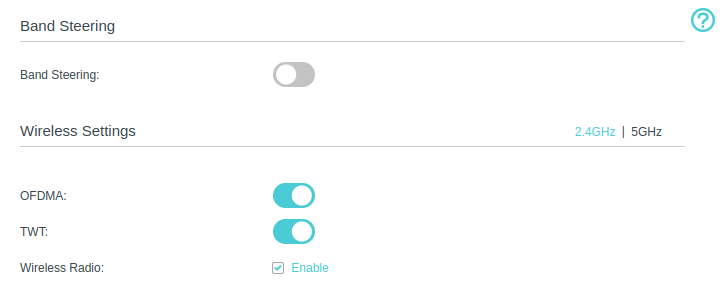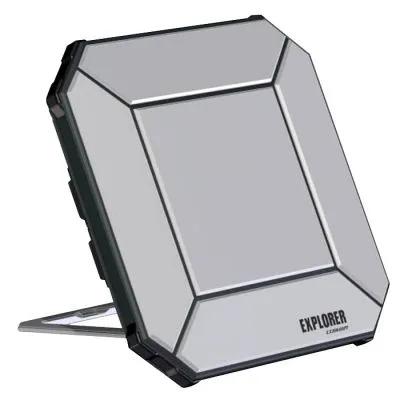internet
networking
router
tips and tricks
wireless
24ghz, 5ghz, amateuradio, APRS, bandsteering, broadband, dualband, frequencybands, hamradio, homeautomation, homewifi, internet, IoT, meshwifi, networking, networkperformance, networksetup, networktips, router, routersettings, SignalStrength, smartdevices, SmartHome, tech, TechBlog, wifi, wifi5, wifi6, wifioptimization, wireless, wirelessnetwork
9M2PJU
0 Comments
Should You Combine or Separate 2.4GHz and 5GHz Wi-Fi Bands? Let’s Break It Down
In the era of smart homes, streaming, and constant connectivity, your Wi-Fi setup can make a big difference in overall network performance. One common question that pops up among users — especially those who tinker with their home networks — is whether to combine (bond) the 2.4GHz and 5GHz bands under one SSID, or to separate them into two distinct networks.
In this post, we’ll go deep into the pros, cons, and technical considerations so you can make an informed decision based on your home setup and usage.
🔍 Understanding the Basics: 2.4GHz vs. 5GHz
Before deciding on your Wi-Fi configuration, it’s essential to understand what each frequency band offers:
🟢 2.4GHz Band
- Wider coverage: Better range and wall penetration.
- Lower speed: Typically maxes out around 100–150 Mbps depending on conditions.
- More interference: Shares space with Bluetooth, microwaves, and other 2.4GHz devices.
- Best for: IoT devices, printers, older laptops, and long-range coverage in larger homes.
🔵 5GHz Band
- Faster speeds: Supports higher throughput (up to several Gbps with Wi-Fi 5/6).
- Shorter range: Less effective at penetrating walls and obstacles.
- Less interference: Cleaner spectrum with more non-overlapping channels.
- Best for: Streaming, gaming, video calls, and modern devices in close proximity.
🔗 Option 1: Combining Both Bands (Single SSID)
When you bond the two bands under a single SSID, your router tries to use “band steering” to guide devices to the optimal frequency. For example, a smartphone closer to the router will likely be nudged to 5GHz, while one farther away might stay on 2.4GHz.
✅ Advantages
- Simplified management: One Wi-Fi name and password.
- Seamless roaming: Devices switch bands without user intervention.
- Cleaner UI: Especially useful for non-technical users.
❌ Disadvantages
- Inconsistent performance: Not all devices follow band steering properly. Some may stubbornly stick to 2.4GHz even when 5GHz is clearly better.
- Difficult to diagnose: You can’t easily tell which device is on which band.
- Smart devices confusion: Some IoT gadgets (especially cheap or older ones) behave oddly when the SSID is shared.
🧠 When to Use It
- You’re running a mesh system with intelligent band steering (e.g., Google Nest, ASUS AiMesh, TP-Link Deco).
- You value simplicity over micromanagement.
- Most of your devices are modern and support 5GHz.
🔀 Option 2: Separating the Bands (Dual SSIDs)
With separate SSIDs — say MyWiFi-2.4GHz and MyWiFi-5GHz — you have complete control over which device connects to which band.
✅ Advantages
- Greater control: Assign devices manually to the band that suits them best.
- More reliable performance: Critical devices can be locked to 5GHz for speed or to 2.4GHz for stability.
- Troubleshooting is easier: You know exactly what’s connected where.
❌ Disadvantages
- More work: Two SSIDs to manage, configure, and remember.
- Manual switching: Some devices may not auto-switch when you move around the house.
- More complex UI for guests or non-techy users.
🧠 When to Use It
- You have many smart home devices (e.g., smart bulbs, plugs, cameras) that require 2.4GHz only.
- You’re a power user who wants fine-tuned performance.
- You have devices that suffer from sticky band steering when using combined SSID.
🛠️ Technical Considerations
🛜 Wi-Fi Standards
- Wi-Fi 5 (802.11ac) and Wi-Fi 6 (802.11ax) provide better band steering support.
- Routers with MU-MIMO and OFDMA perform better with combined SSID setups.
📡 Router Quality Matters
Some routers have terrible band steering, and devices randomly cling to the 2.4GHz band, hurting performance. In this case, separating SSIDs is the better option.
📶 Channel Congestion
- The 2.4GHz band has only three non-overlapping channels (1, 6, 11), so interference is common.
- The 5GHz band has more clean channels, especially if DFS (Dynamic Frequency Selection) channels are enabled.
💻 Smart Devices Setup Tip
Many smart plugs and bulbs require initial setup on 2.4GHz. If you’re using a bonded SSID, disable 5GHz temporarily to complete setup, then re-enable it.
🧭 Recommendation
For most power users, tech enthusiasts, or households with mixed-use cases (like IoT and heavy streaming), separating SSIDs is the better route:
- Name them clearly (e.g.,
PJU-2.4GandPJU-5G) - Lock bandwidth-heavy devices (like smart TVs, laptops, PS5s) to 5GHz.
- Assign low-bandwidth IoT stuff to 2.4GHz.
But if you’re managing a network for family members or want a cleaner and more hands-off experience, bonding with a good router might be the way to go — just make sure band steering works well.
🗨️ Final Thoughts
There’s no universal “best” option — it all depends on your network environment, router capabilities, and usage pattern. For someone like me who’s into amateur radio, smart sensors, APRS gateways, and gadgets all over the house, having separate SSIDs gives peace of mind and better control.







Post Comment